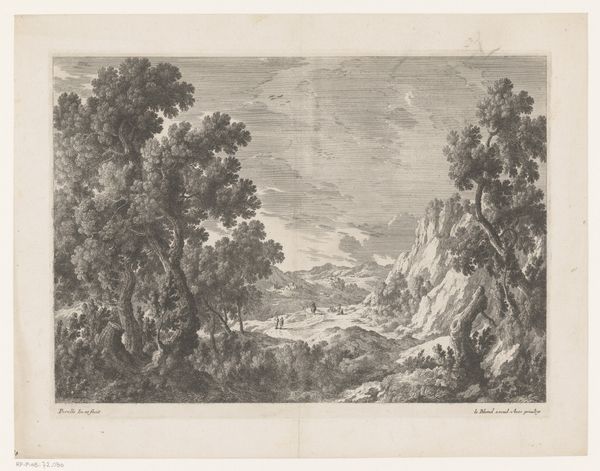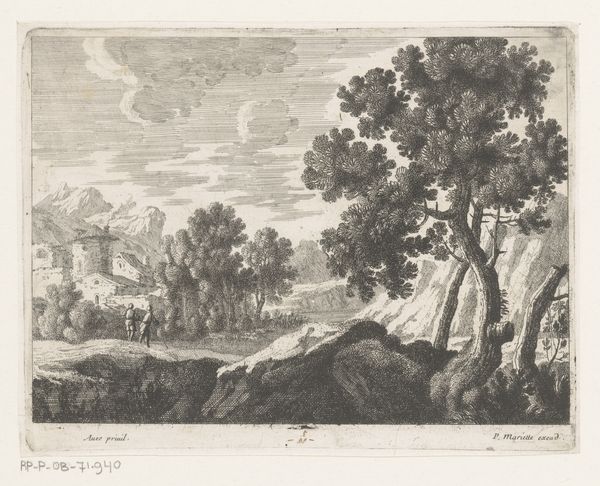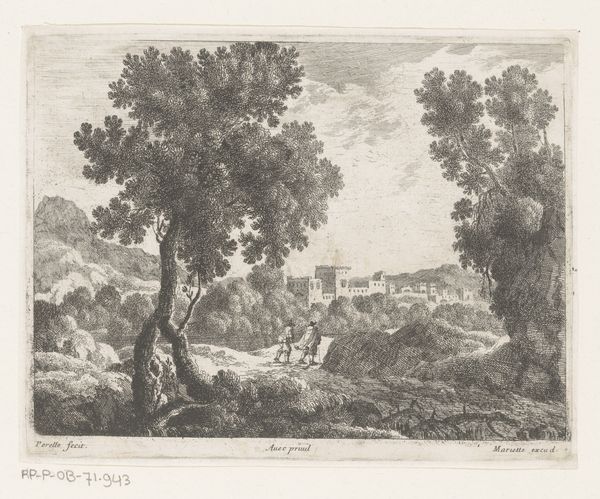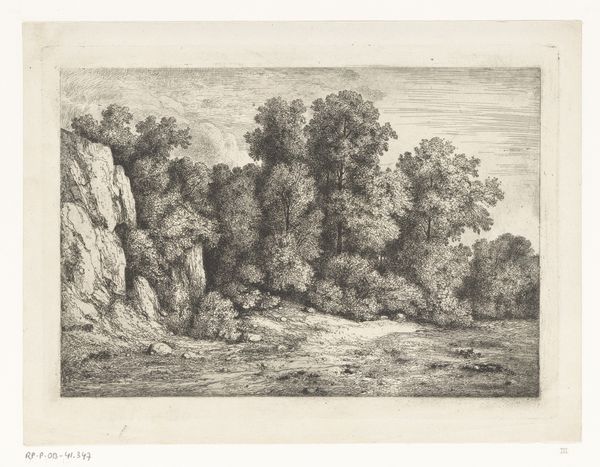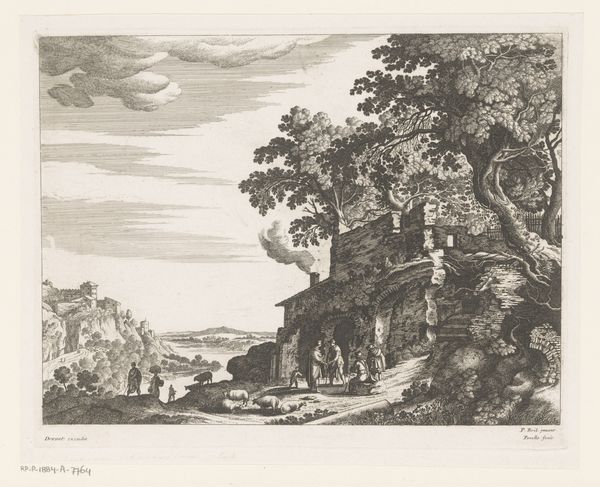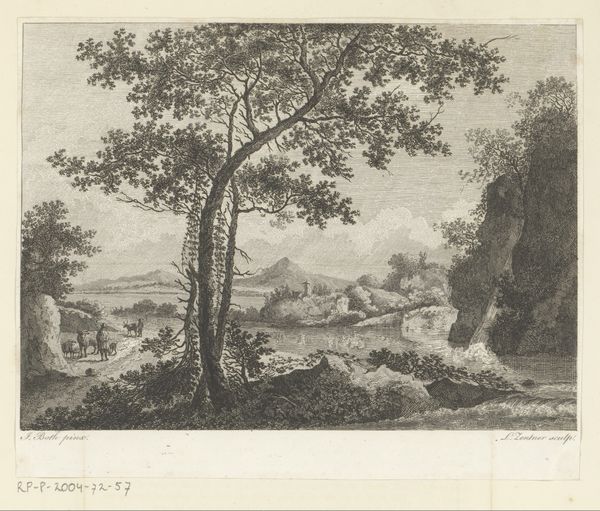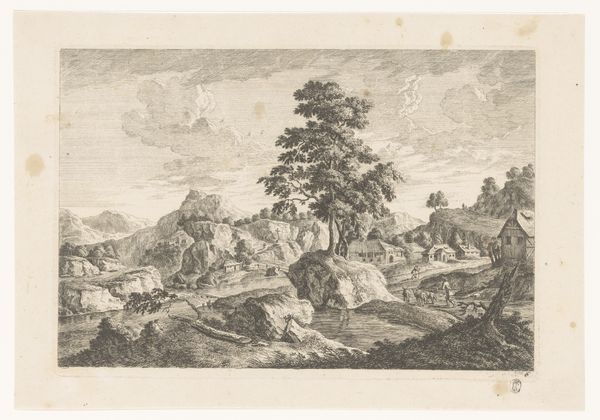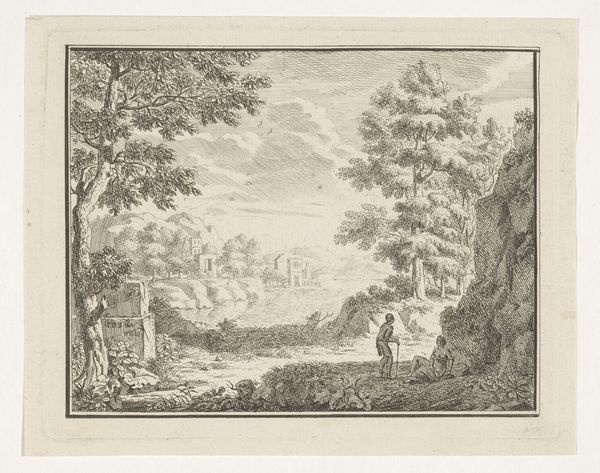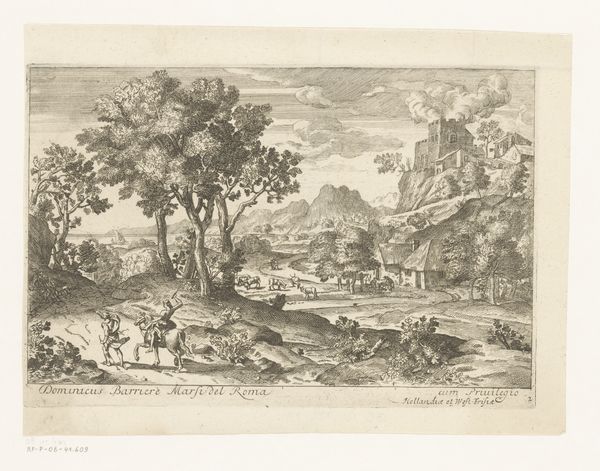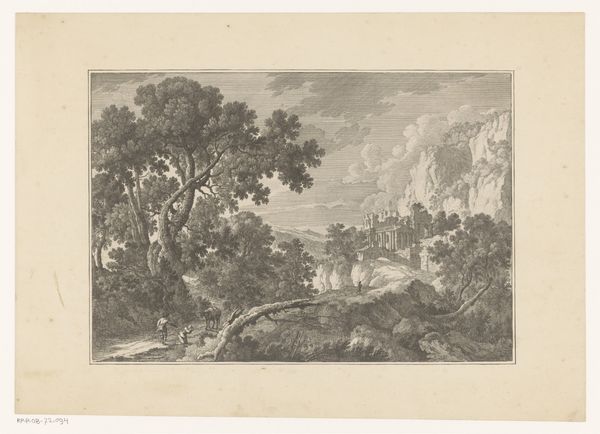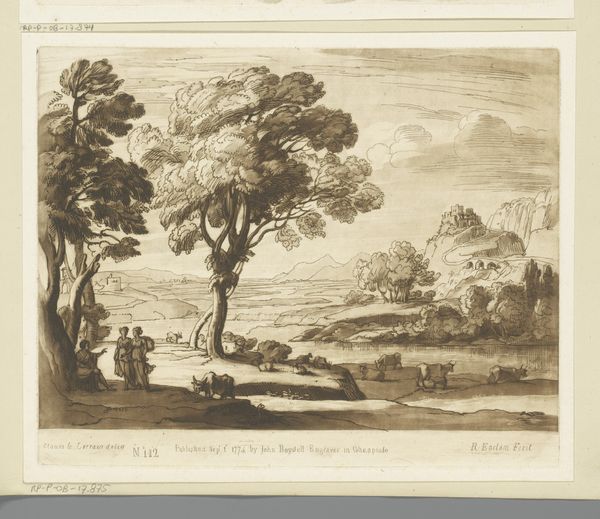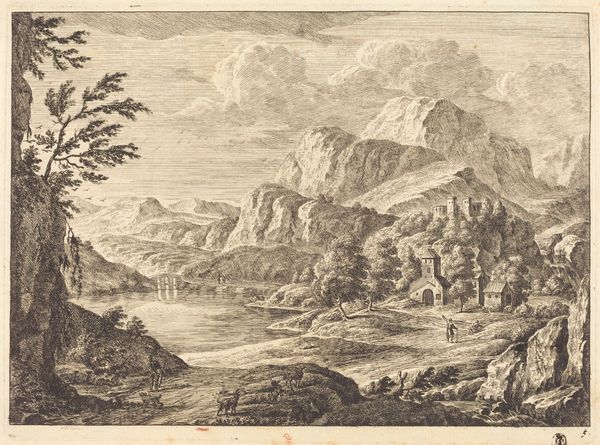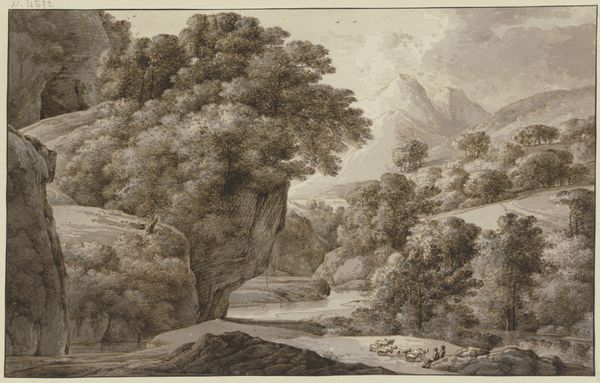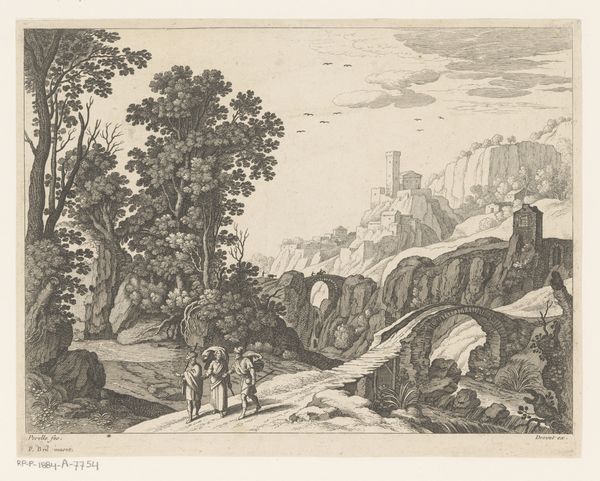
engraving
#
baroque
#
old engraving style
#
landscape
#
line
#
history-painting
#
engraving
Dimensions: height 144 mm, width 186 mm
Copyright: Rijks Museum: Open Domain
Curator: Let’s turn our attention to Nicolas Perelle’s “Vlakte in heuvelachtig landschap met figuren,” dating sometime between 1613 and 1695. This piece resides here at the Rijksmuseum and provides an exemplary study of baroque landscape traditions through the meticulous process of engraving. Editor: It’s a fairly unassuming scene, yet something about the stark contrast in shading lends it a mysterious air. You get a sense of the hardiness required of pastoral life. Curator: Absolutely. This engraving embodies an aesthetic very much rooted in its societal context. We can see that the lines emphasize not just depth but also define labor and the social hierarchy depicted in this pastoral landscape. Editor: The materials involved are pretty straightforward: a metal plate, ink, and paper. But I'm struck by how this simple technology has recorded and distributed this vision of land ownership and exploitation of labor. Curator: Exactly. Think about the politics of imagery in that period; this work may romanticize rural life, but it subtly upholds contemporary socio-economic values linked to property and hard work. Notice how the lone rider stands distinctly apart from those shepherding livestock, symbolizing a clear class divide. Editor: That’s spot on. Engraving, while "high art," demanded artisanal skills, a labour-intensive process of transferring imagery from the master to the metal to ultimately serve as documentation and circulation—not unlike today’s digital reproductions, mirroring the value of making things seen. The contrast is harsh: rich landowners against harsh material landscapes. Curator: Precisely, these pieces acted almost as advertisements to wealth and influence while masking other exploitative sides of seventeenth-century life. What this does for Baroque visual culture is pretty undeniable in that light. Editor: It does provide layers of meaning to simple depictions of figures in land—more like workers in terrain that needs an intense investigation concerning the historical labouring values. Seeing these pieces encourages a greater awareness of production and material circumstances, pushing toward an expanded vision of cultural productions. Curator: Indeed, seeing art, even an ostensibly placid landscape like this, asks viewers to delve deeper into power structures that remain largely unseen or forgotten with time. Editor: Couldn't agree more. These seemingly docile sceneries conceal within them the raw mechanics of past labor and economy, a very good example to start with, about how much work and social framework lies underneath each image that gets transported via different media.
Comments
No comments
Be the first to comment and join the conversation on the ultimate creative platform.
